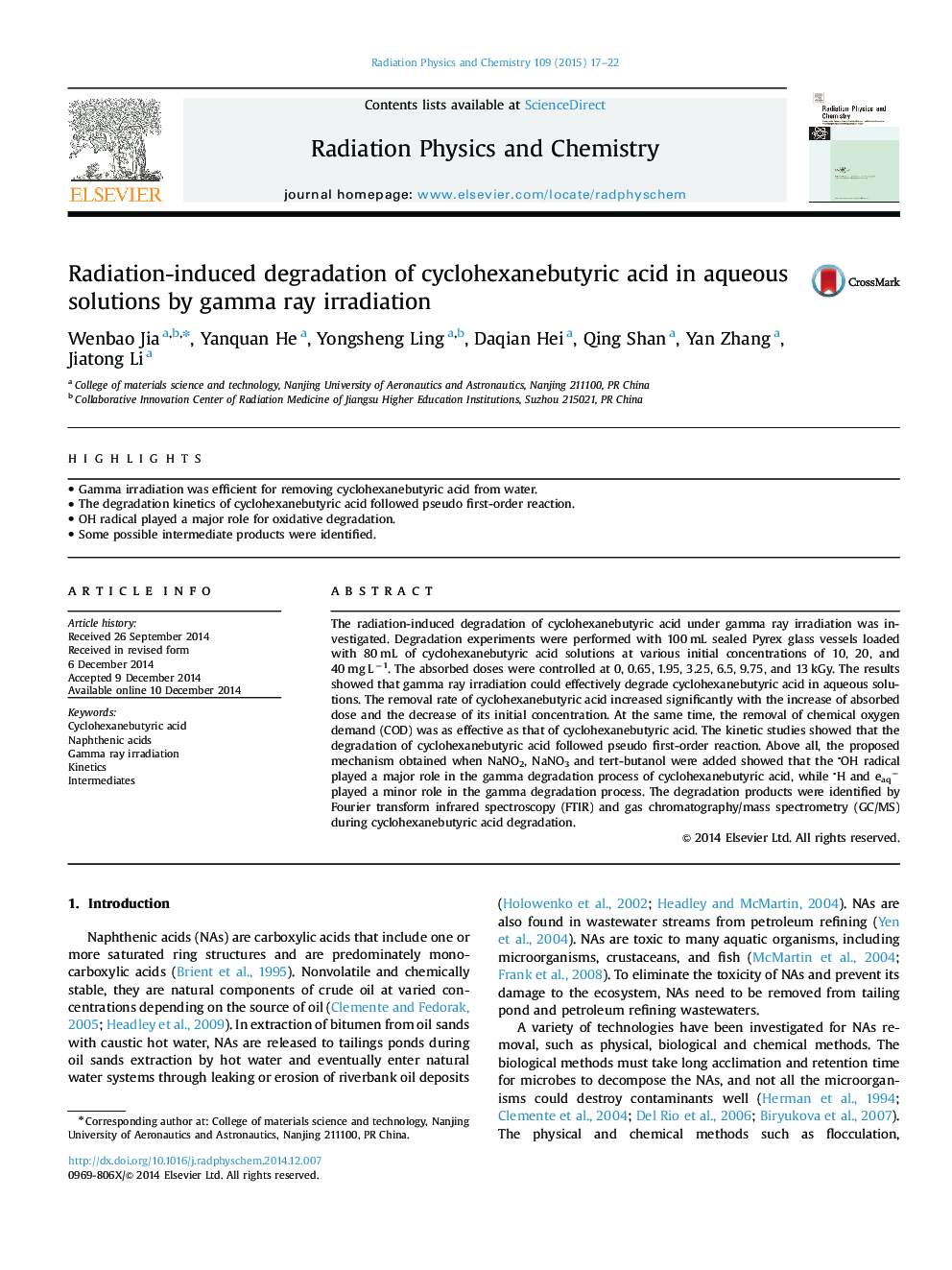| کد مقاله | کد نشریه | سال انتشار | مقاله انگلیسی | نسخه تمام متن |
|---|---|---|---|---|
| 1885891 | 1533515 | 2015 | 6 صفحه PDF | دانلود رایگان |
• Gamma irradiation was efficient for removing cyclohexanebutyric acid from water.
• The degradation kinetics of cyclohexanebutyric acid followed pseudo first-order reaction.
• OH radical played a major role for oxidative degradation.
• Some possible intermediate products were identified.
The radiation-induced degradation of cyclohexanebutyric acid under gamma ray irradiation was investigated. Degradation experiments were performed with 100 mL sealed Pyrex glass vessels loaded with 80 mL of cyclohexanebutyric acid solutions at various initial concentrations of 10, 20, and 40 mg L−1. The absorbed doses were controlled at 0, 0.65, 1.95, 3.25, 6.5, 9.75, and 13 kGy. The results showed that gamma ray irradiation could effectively degrade cyclohexanebutyric acid in aqueous solutions. The removal rate of cyclohexanebutyric acid increased significantly with the increase of absorbed dose and the decrease of its initial concentration. At the same time, the removal of chemical oxygen demand (COD) was as effective as that of cyclohexanebutyric acid. The kinetic studies showed that the degradation of cyclohexanebutyric acid followed pseudo first-order reaction. Above all, the proposed mechanism obtained when NaNO2, NaNO3 and tert-butanol were added showed that the ∙OH radical played a major role in the gamma degradation process of cyclohexanebutyric acid, while ∙H and eaq− played a minor role in the gamma degradation process. The degradation products were identified by Fourier transform infrared spectroscopy (FTIR) and gas chromatography/mass spectrometry (GC/MS) during cyclohexanebutyric acid degradation.
Journal: Radiation Physics and Chemistry - Volume 109, April 2015, Pages 17–22
